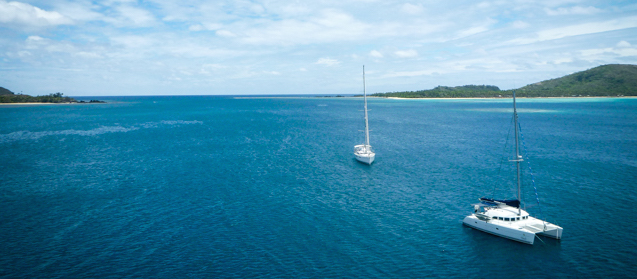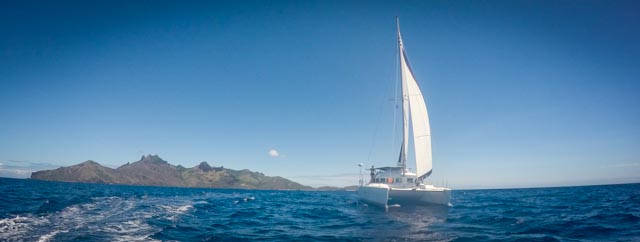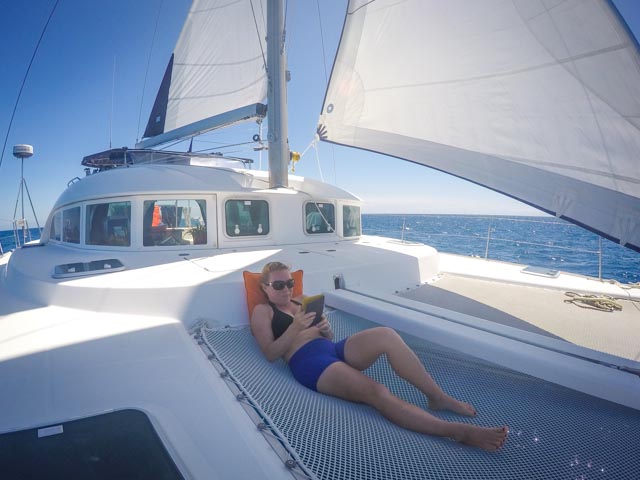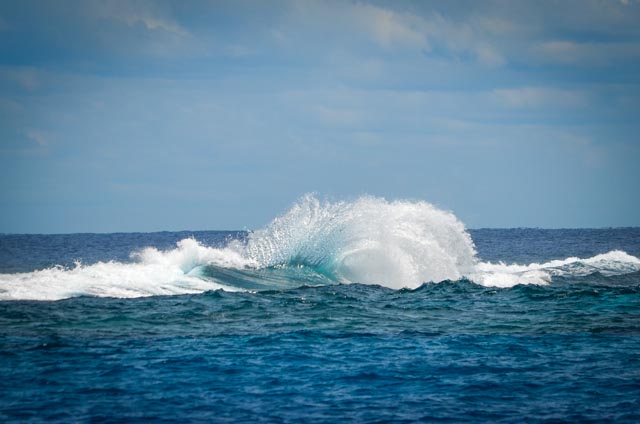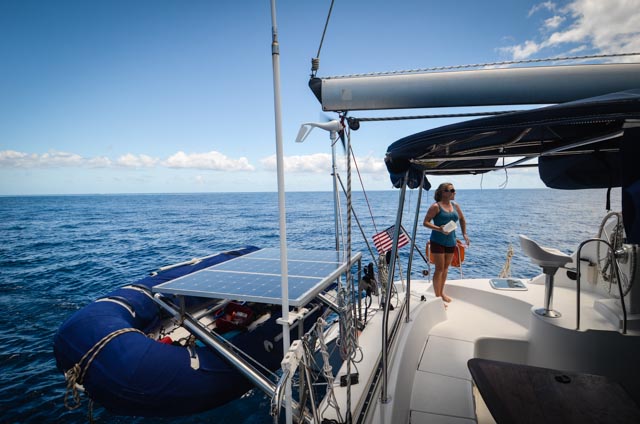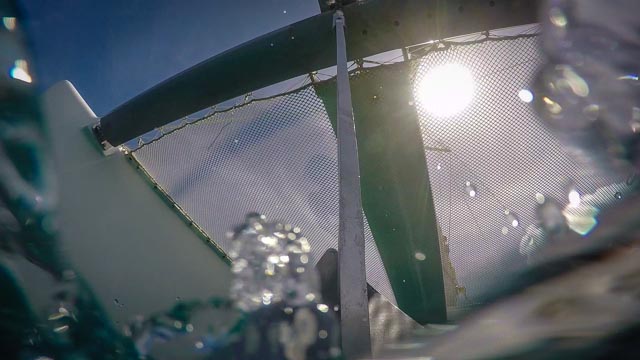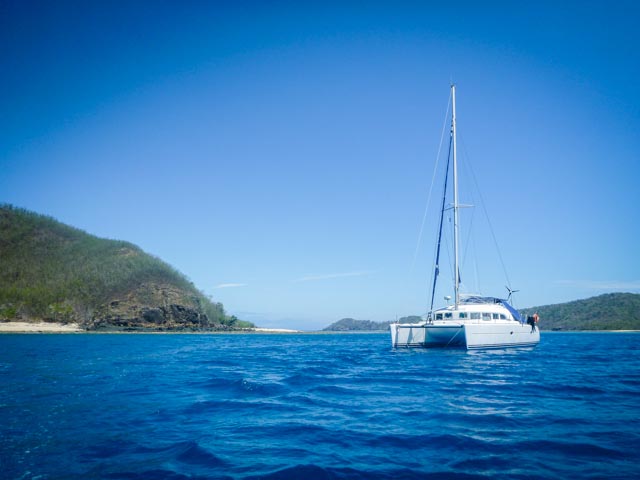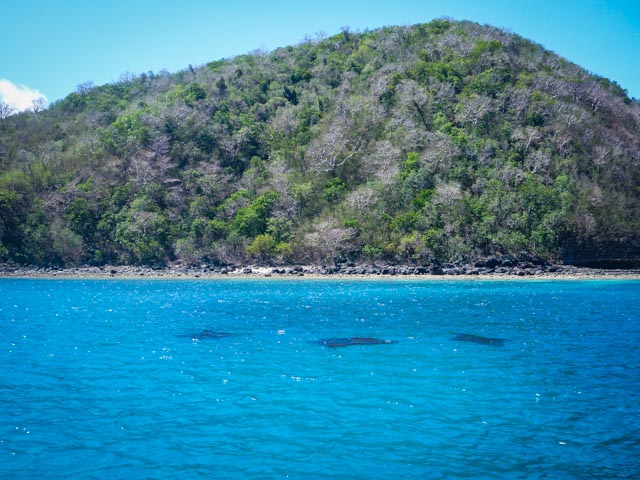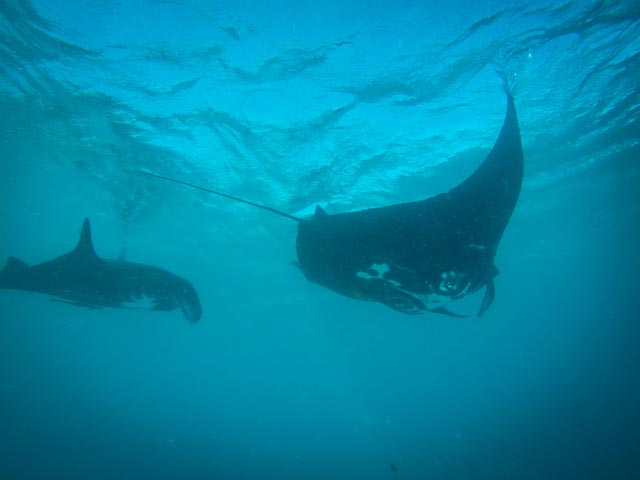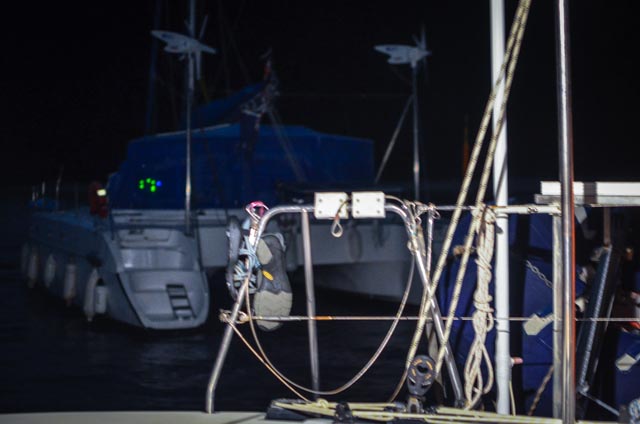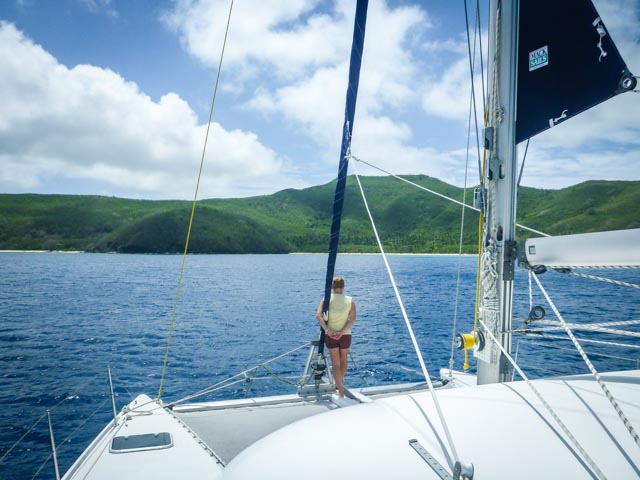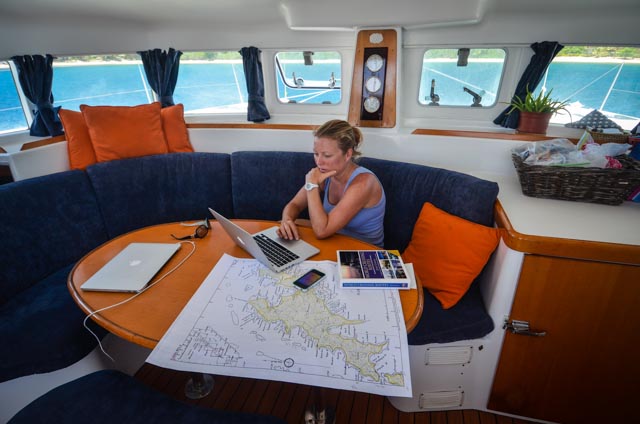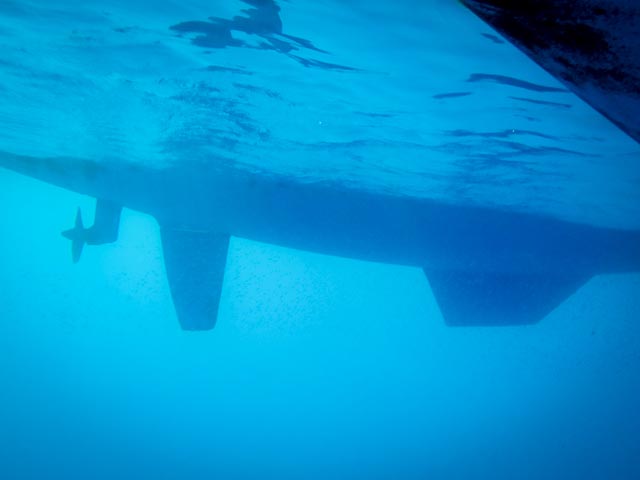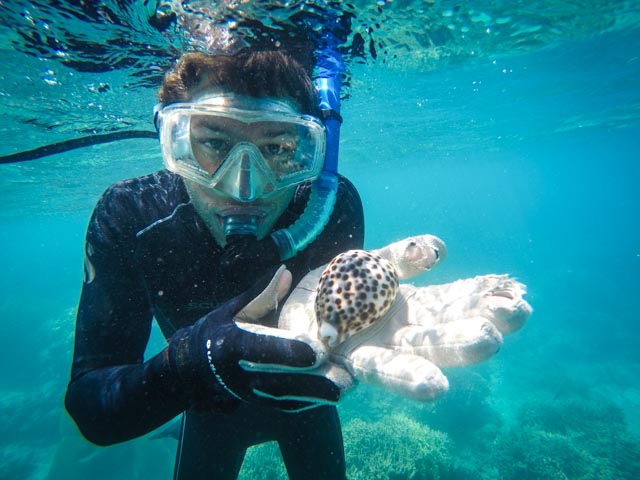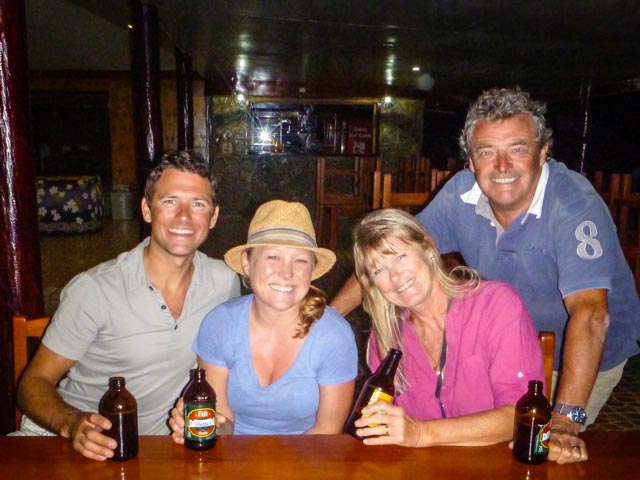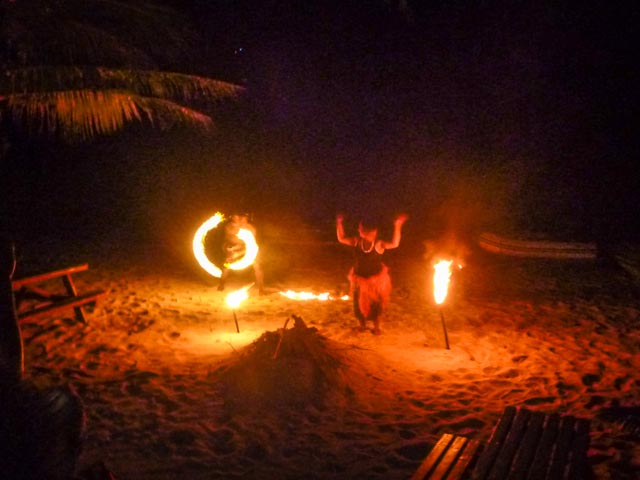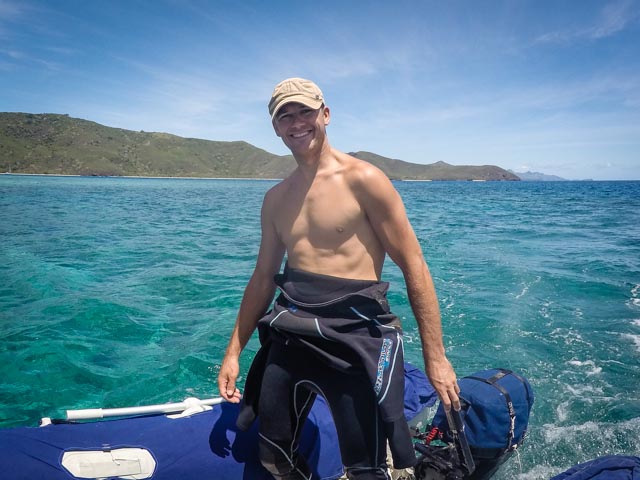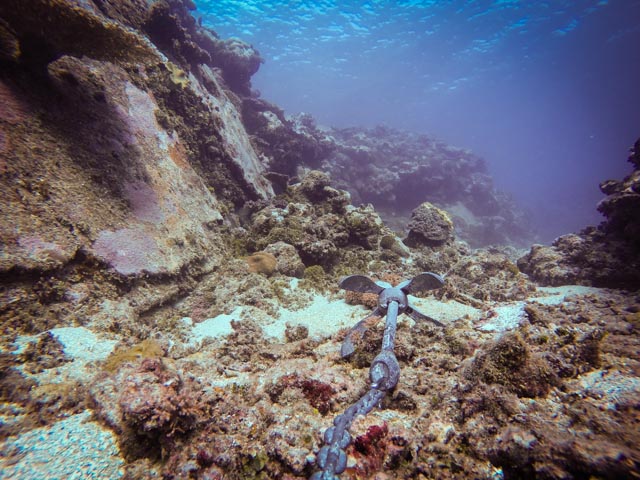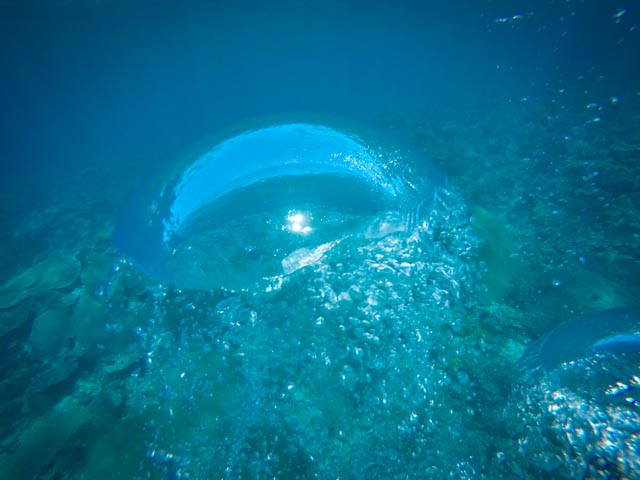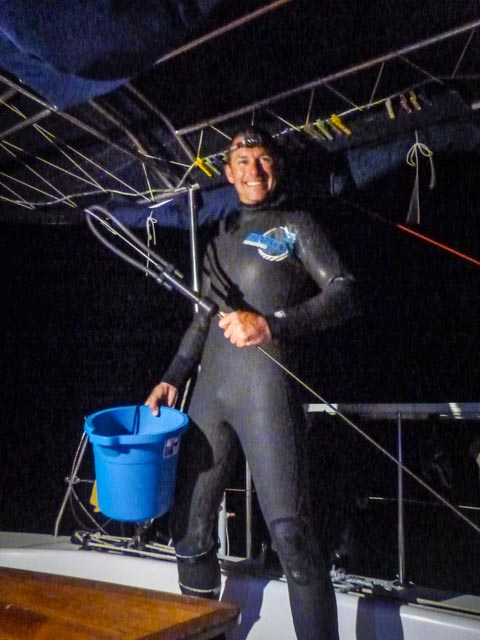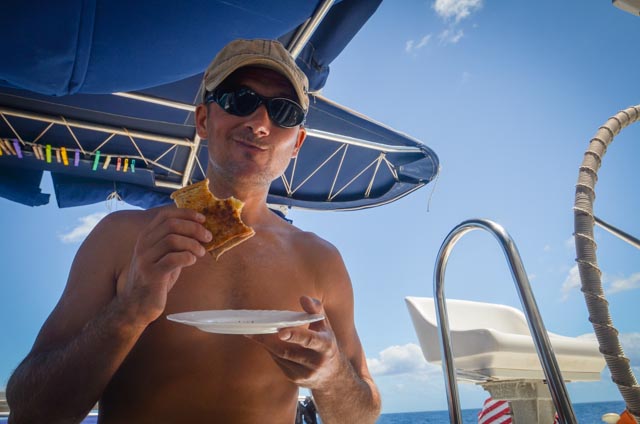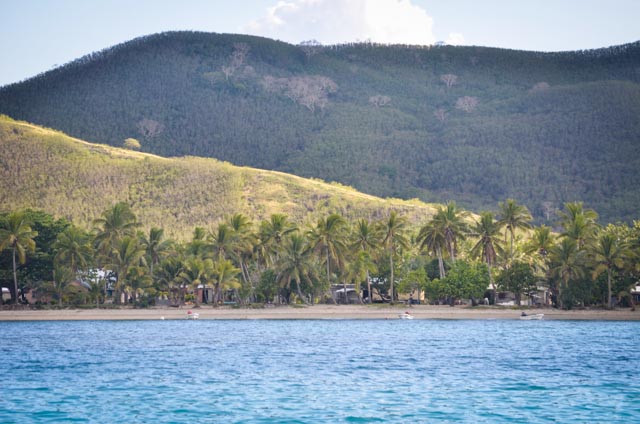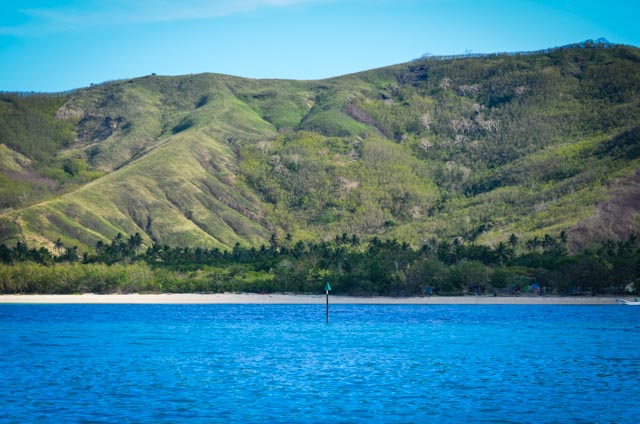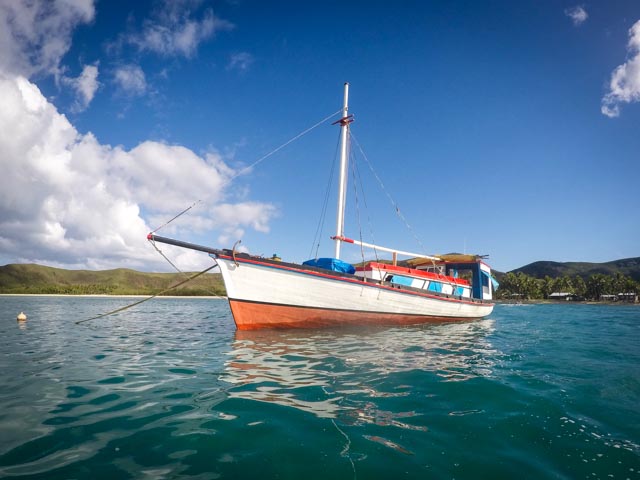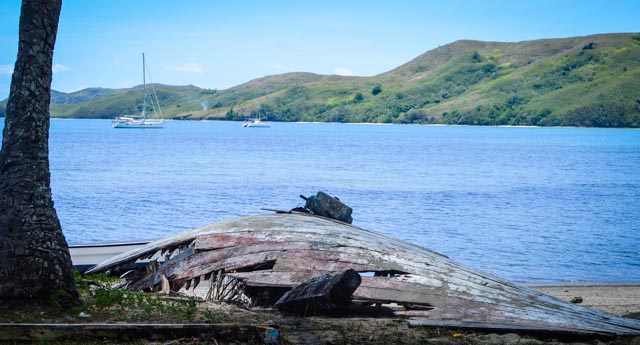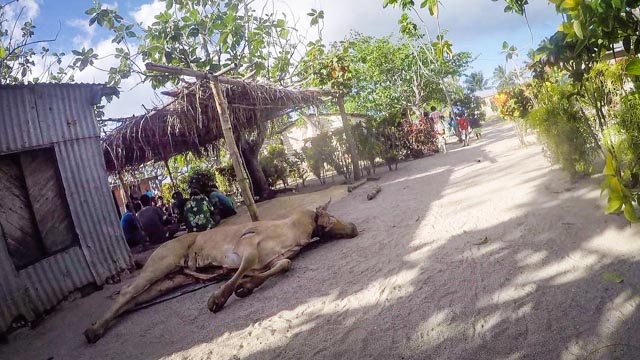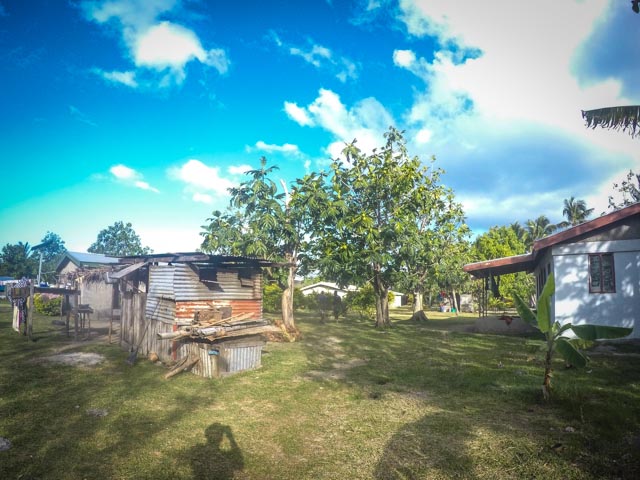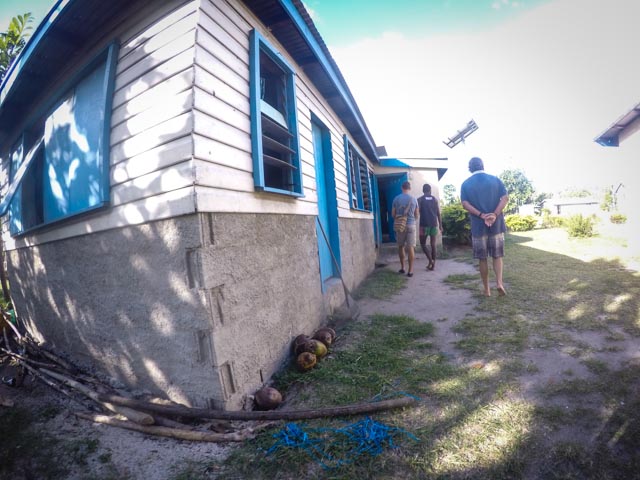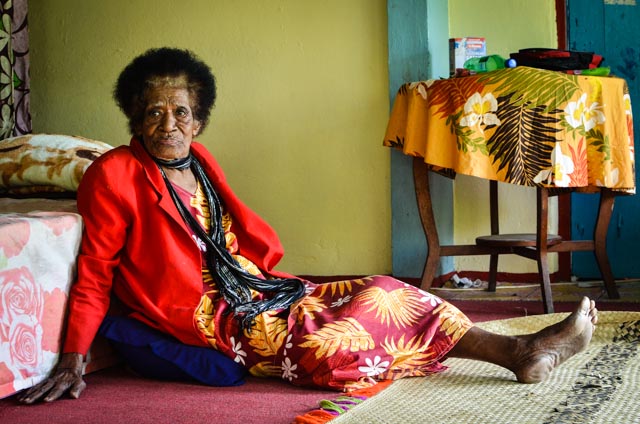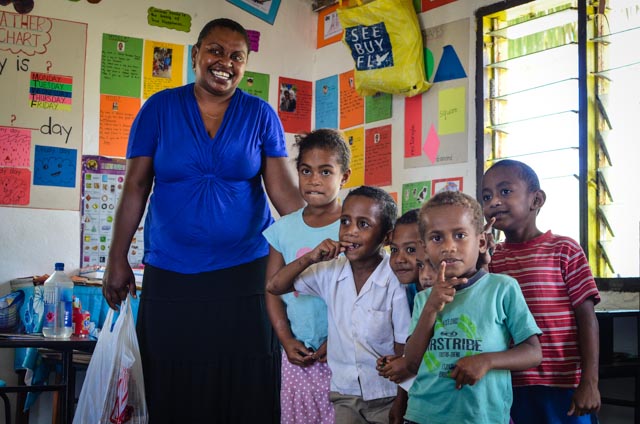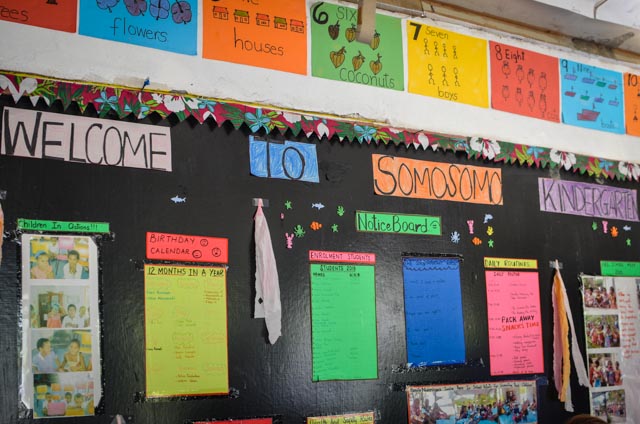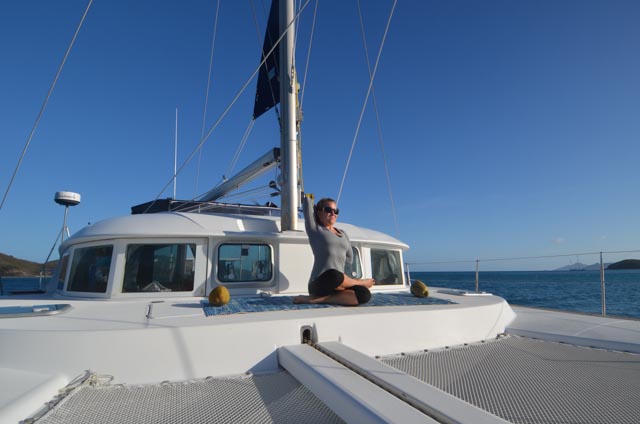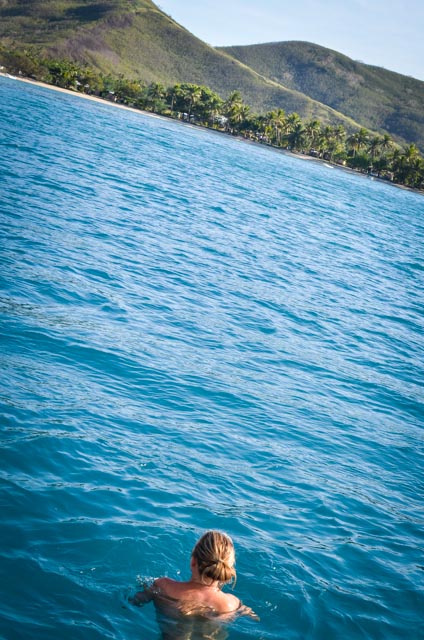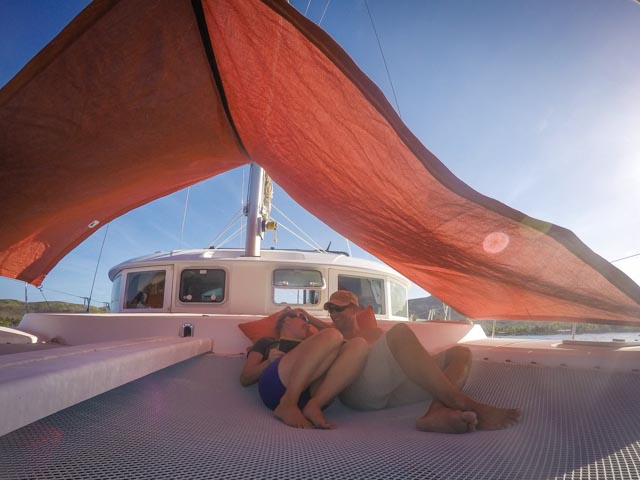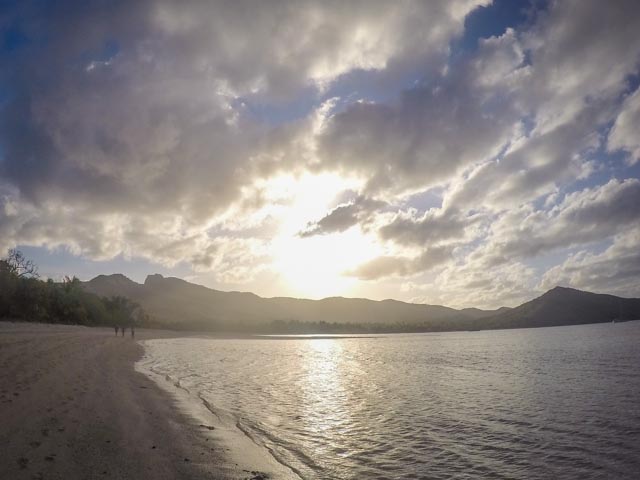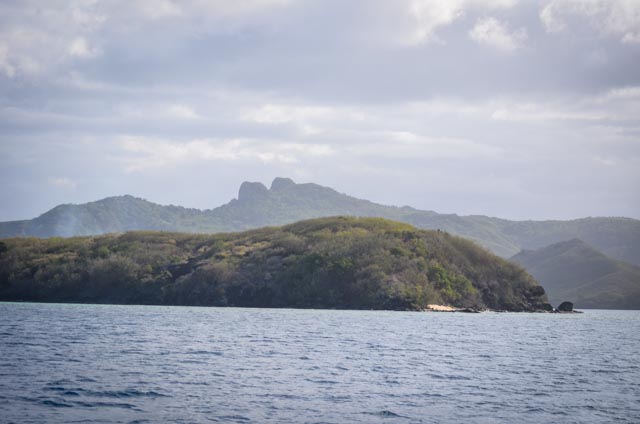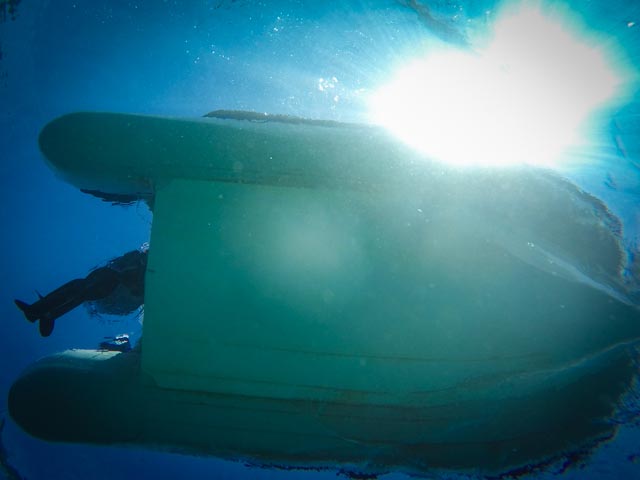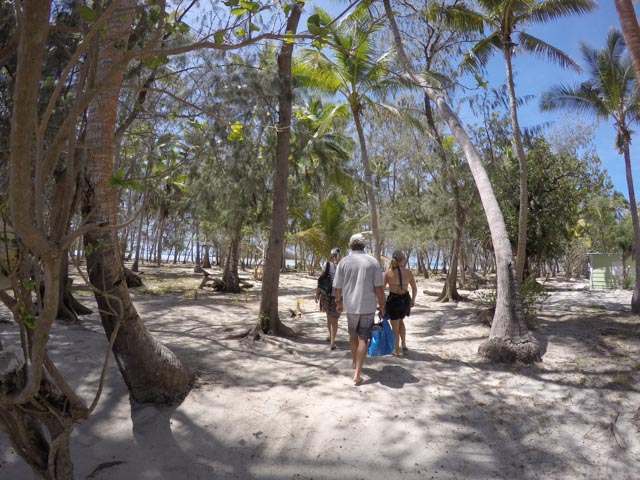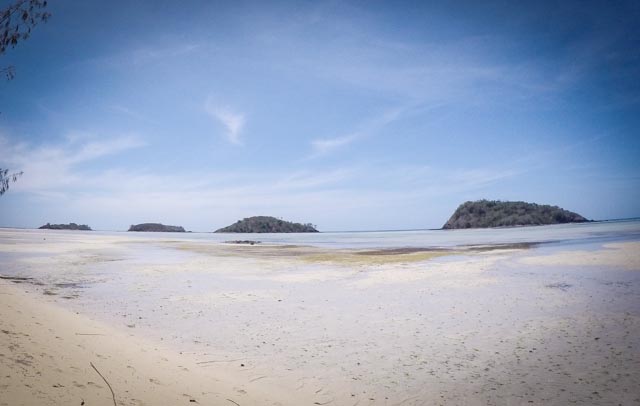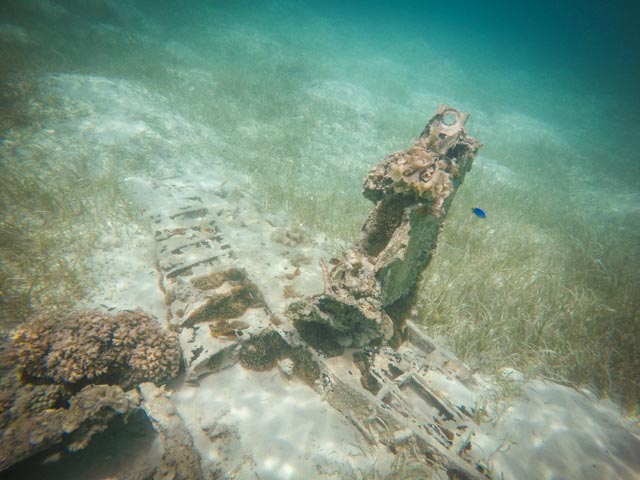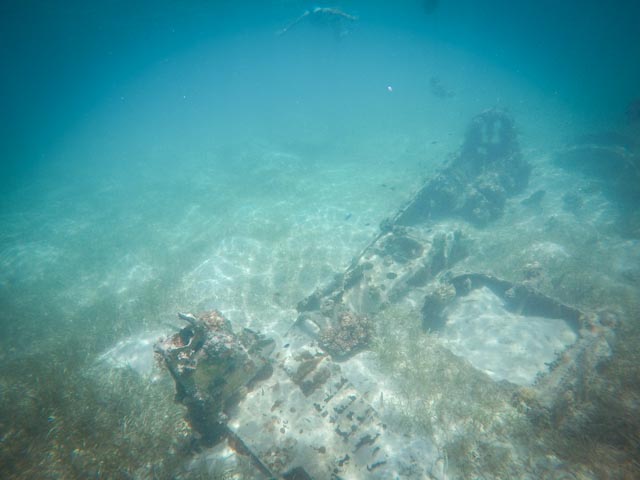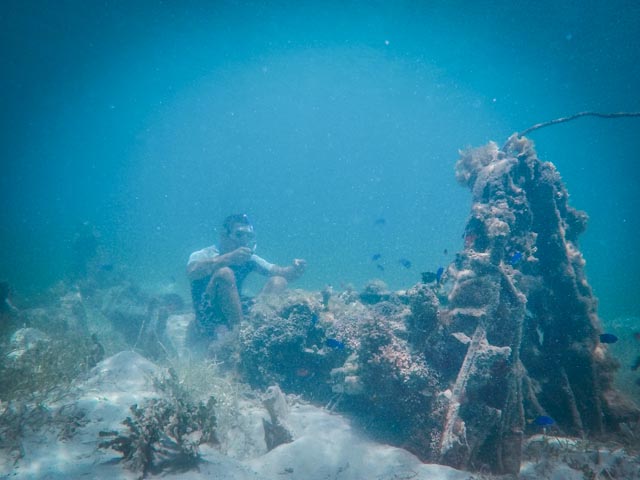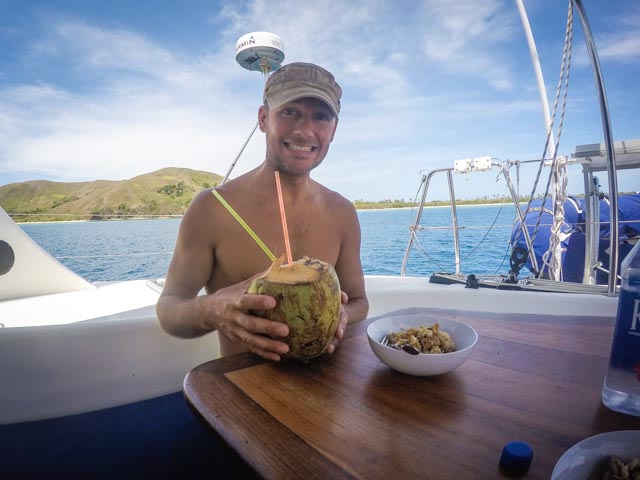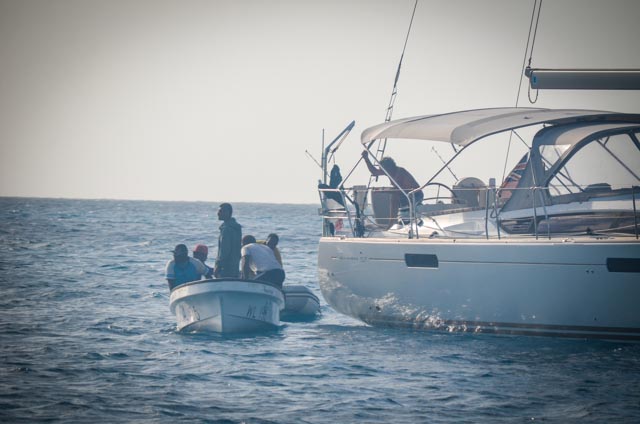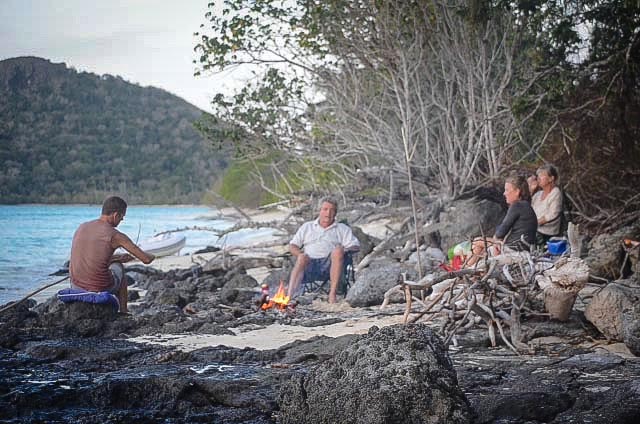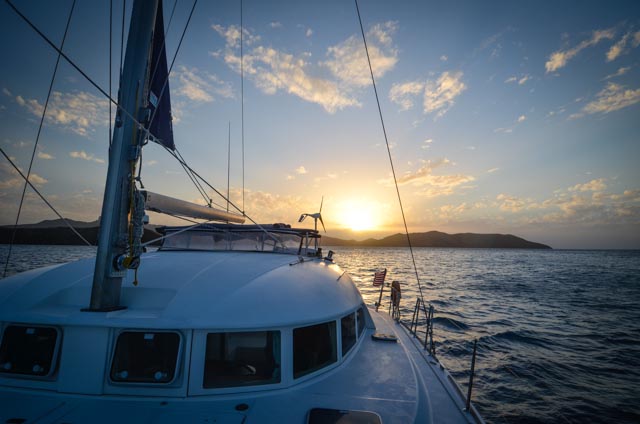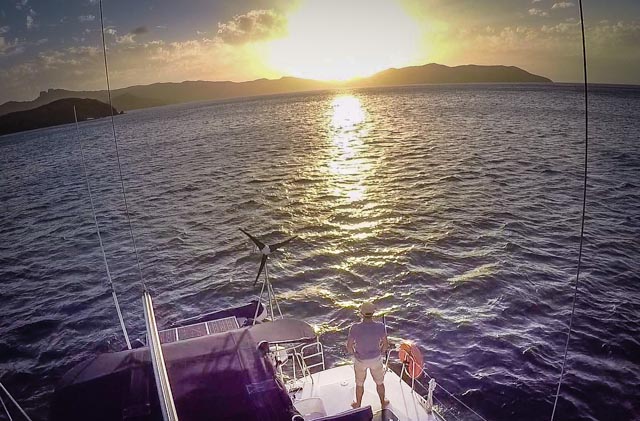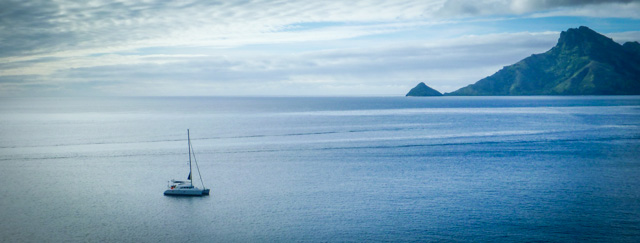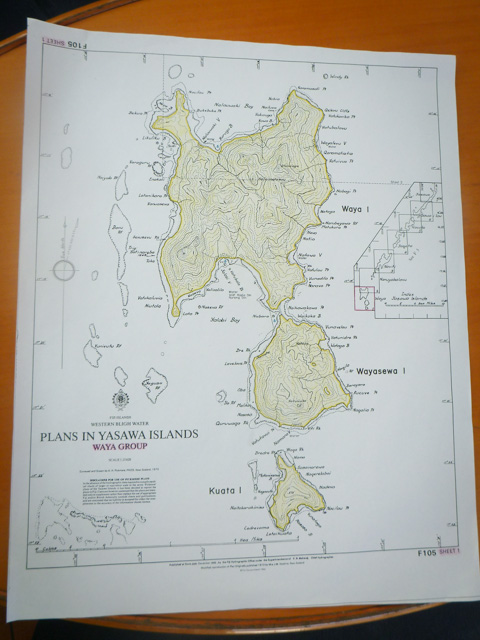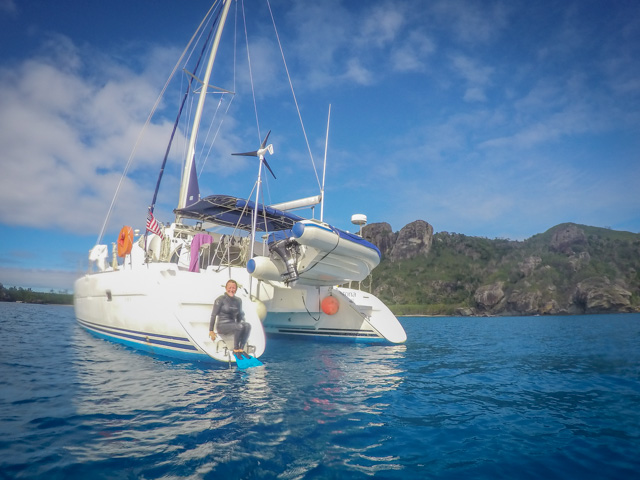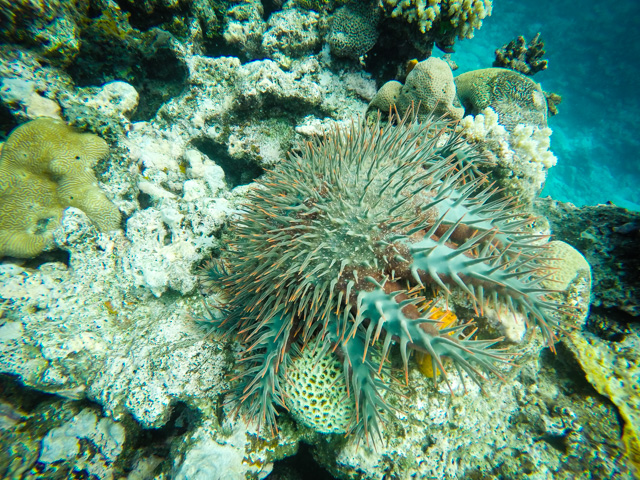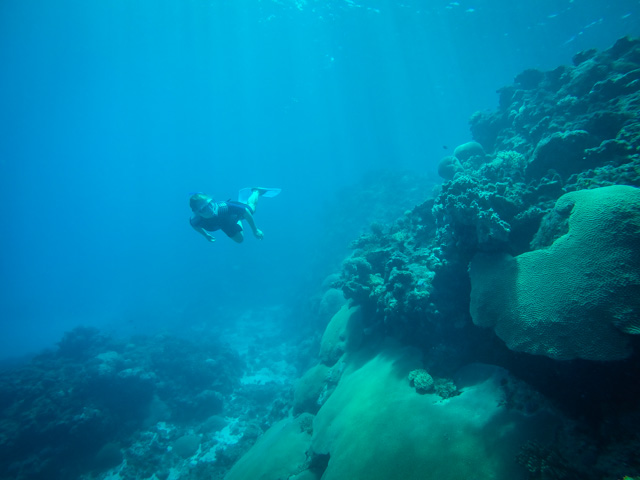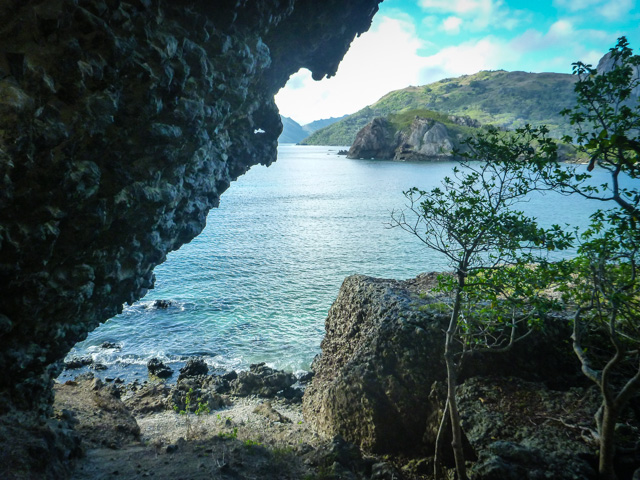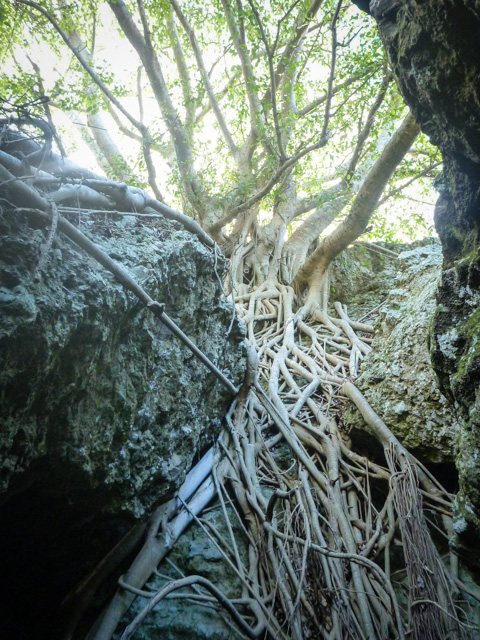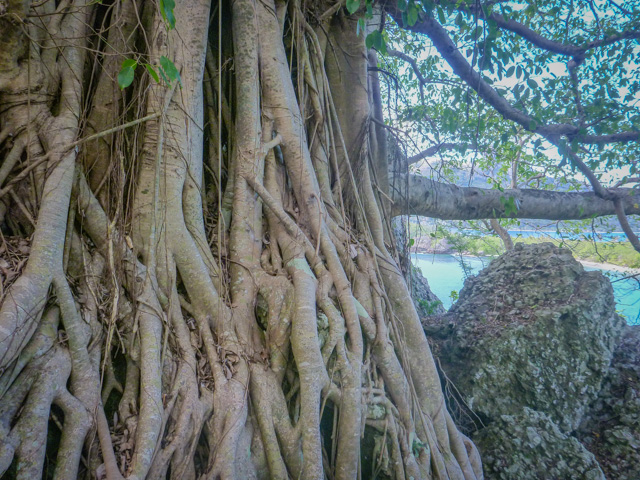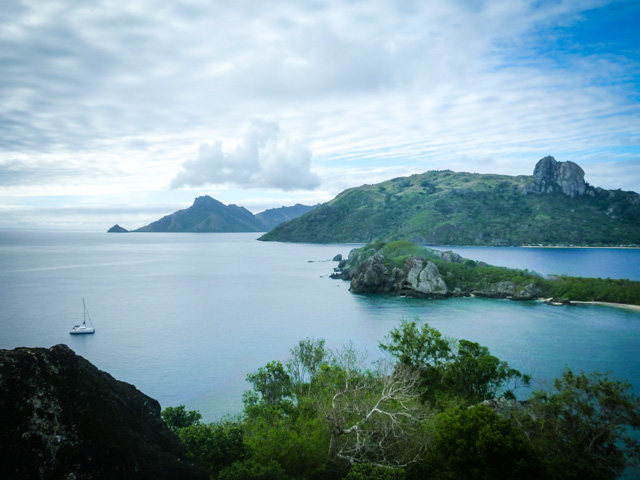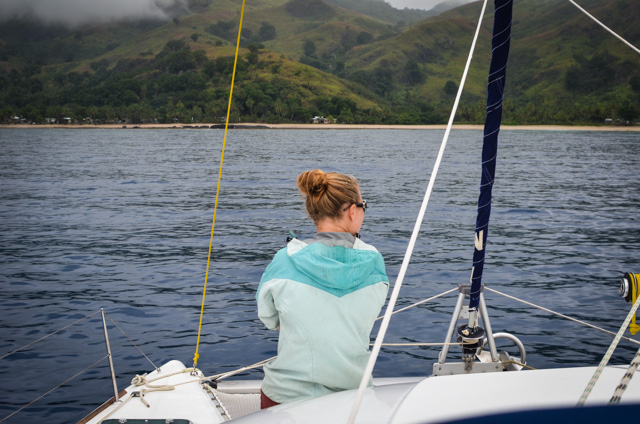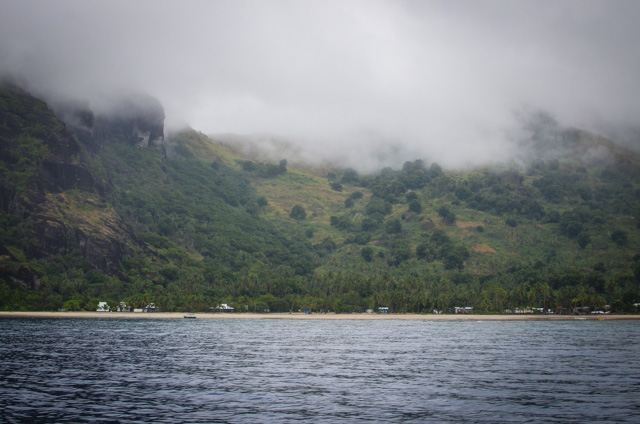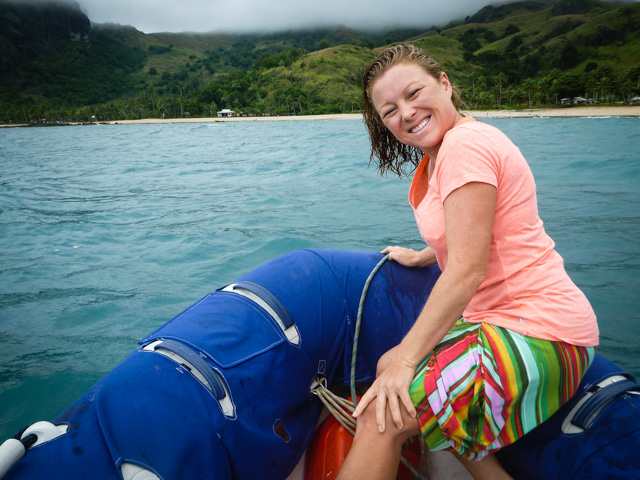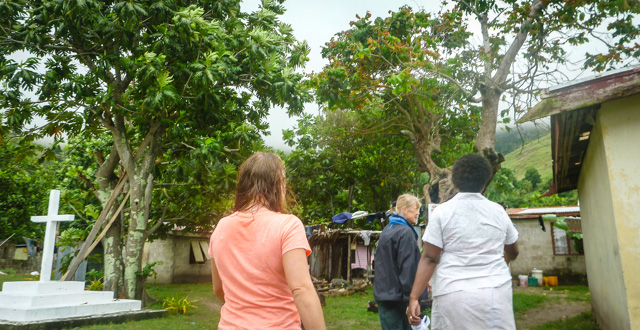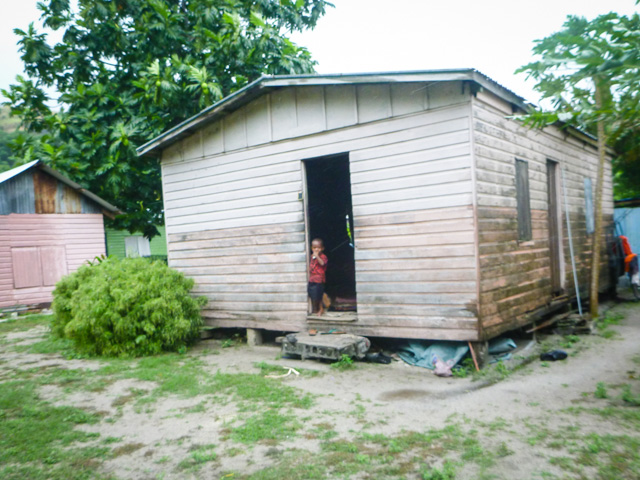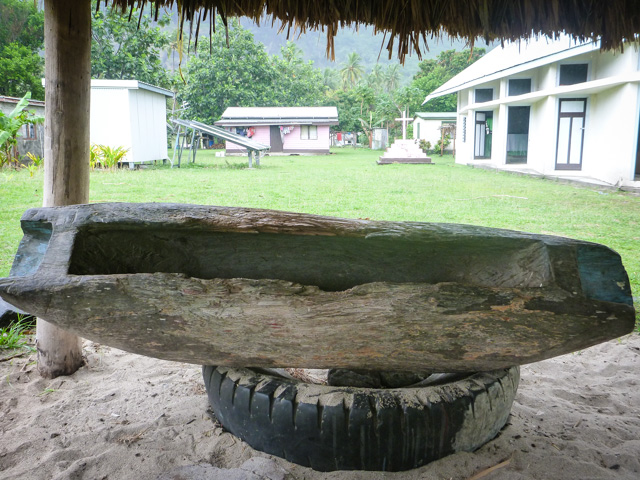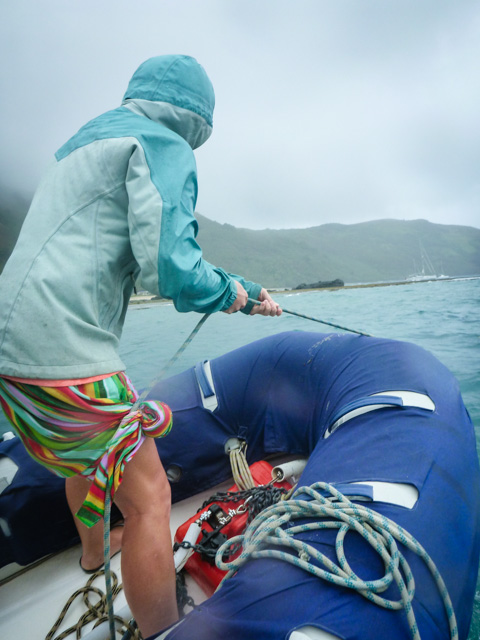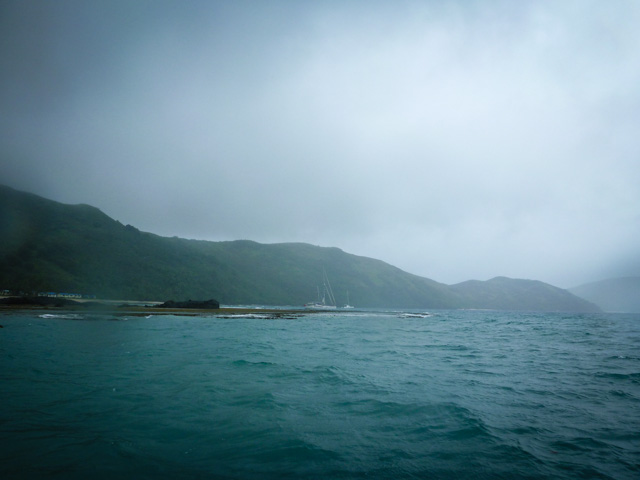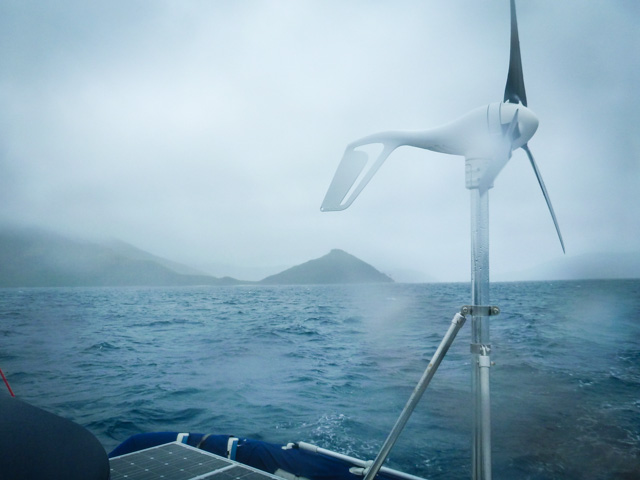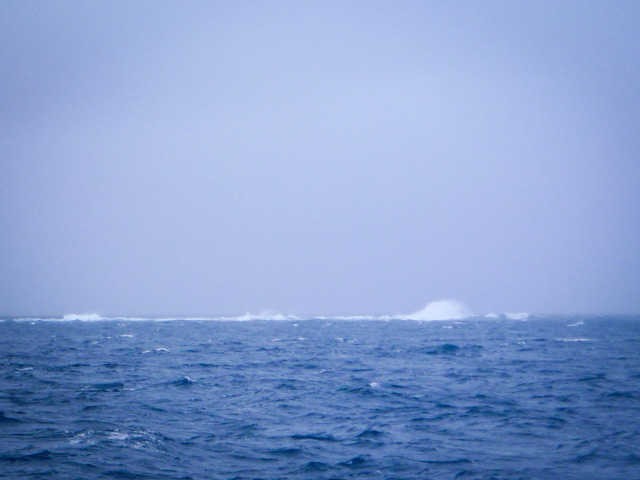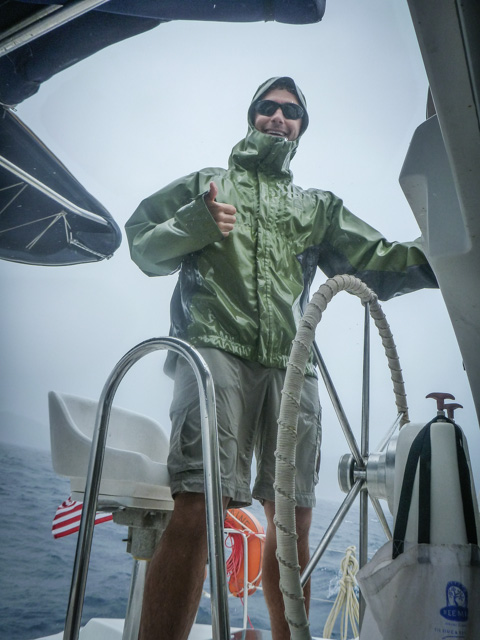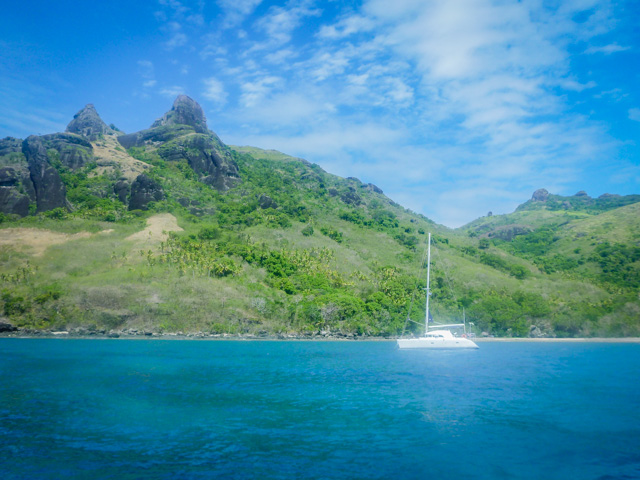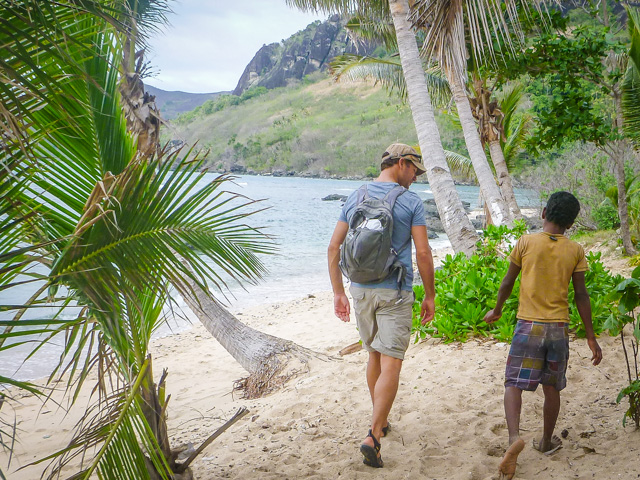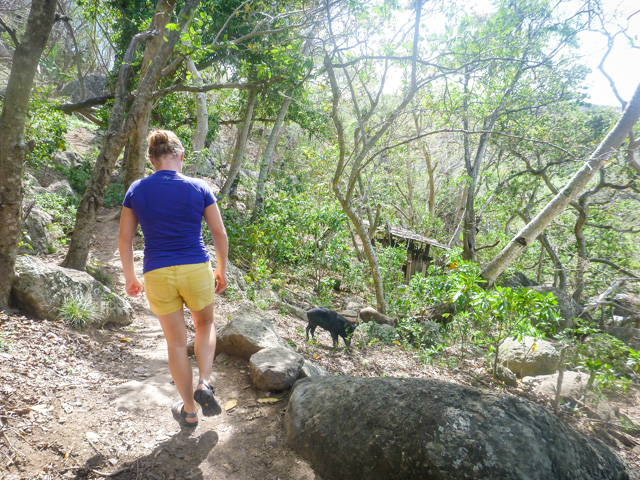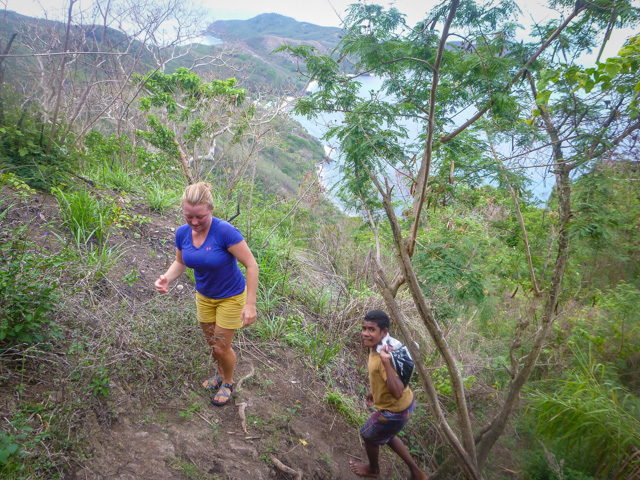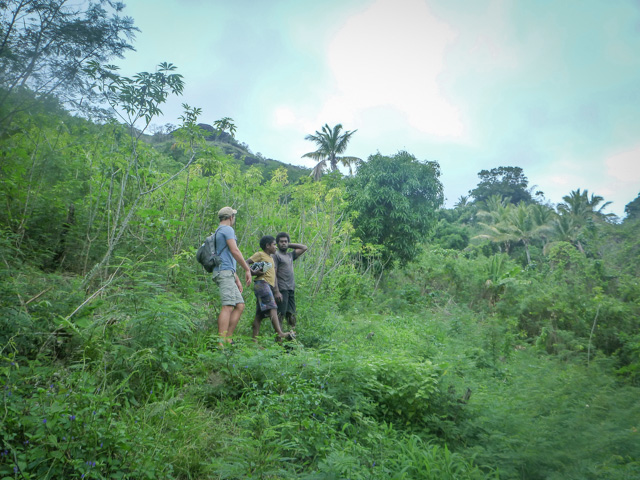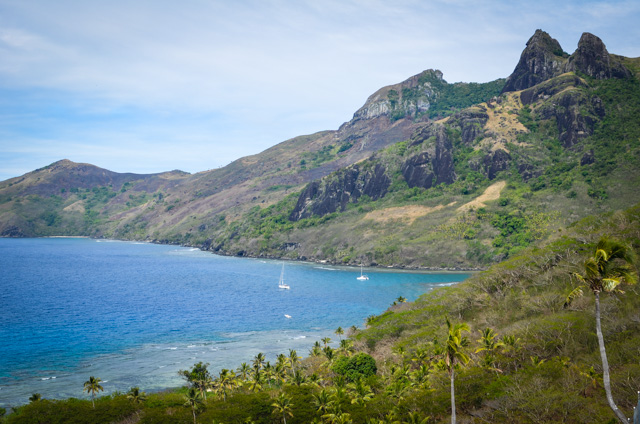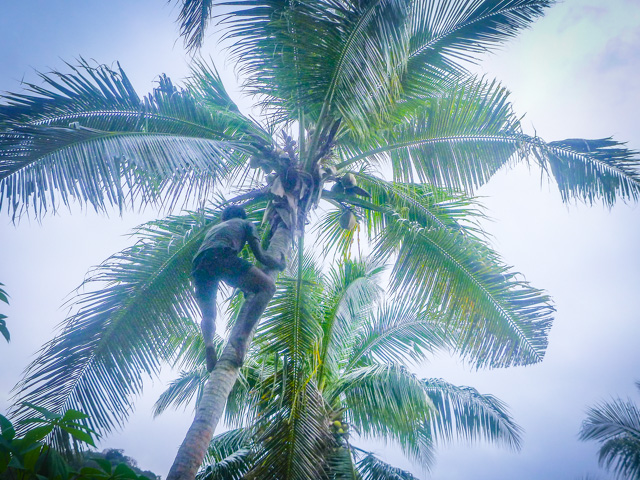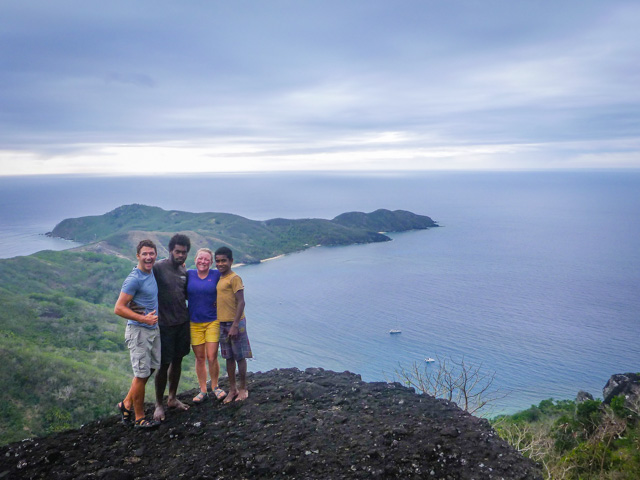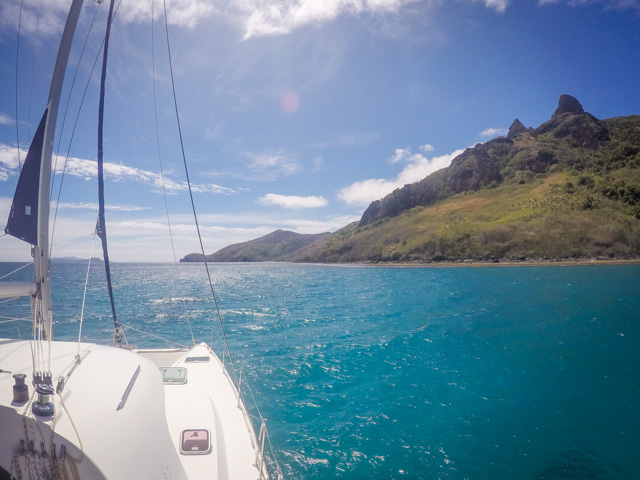Author: Pete
Location: Blue Lagoon, Yasawas, Fiji
We set sail in the morning from Somosomo Bay heading north along the west side of Yanggeta and Matathawa Levu islands keeping a wary eye on all those poorly charted reefs. The charts are so contradictory that at one point the chart plotter showed us sailing over a reef that was supposed to be ‘awash’ (think ankle deep), but really we were in 150 feet of water with the reef clearly visible 300 meters to our port. We were exceedingly happy to be sailing in so much sunshine. Cutting into the island chain, we anchored Tayrona in the excellent protection of the Blue Lagoon.
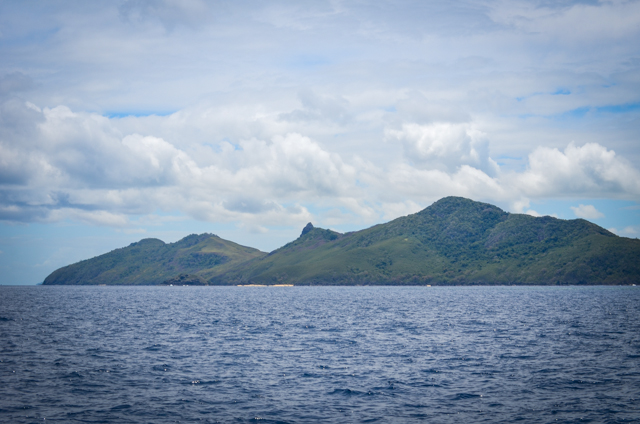
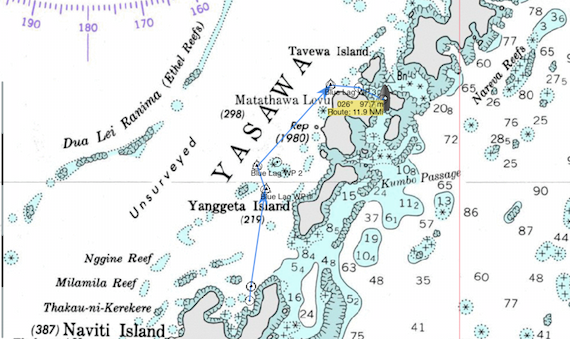
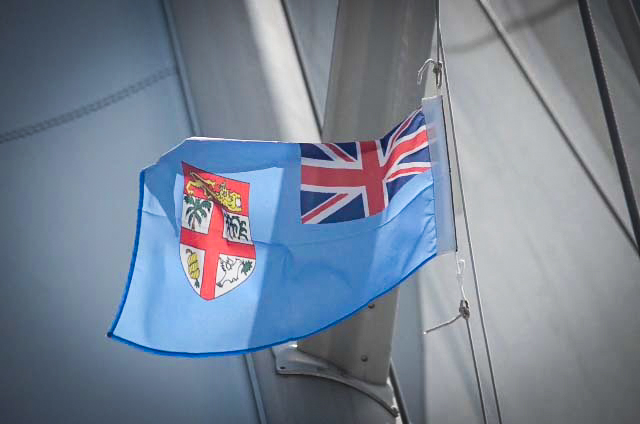
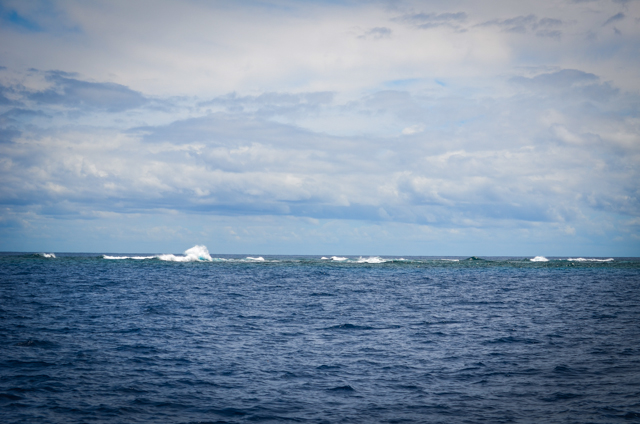
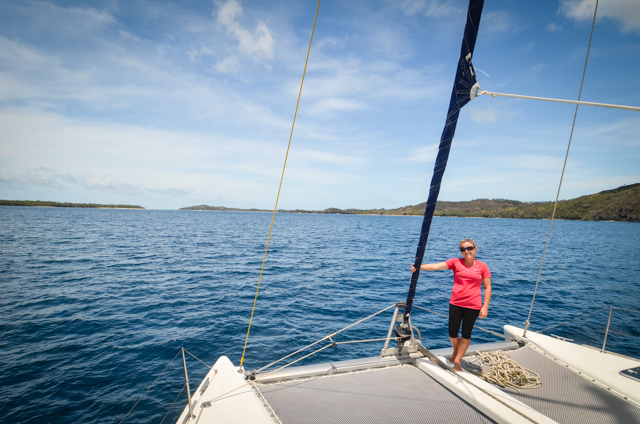
We were again invited to Sunday church service in the village on Matathawa Levu. Seems to be a good way to meet locals and buy fresh fruit. Also, we haven’t hit any reefs yet, so I guess its worth getting up early for the 10:30 service. The church was similar. Following the congregation, we took off our shoes, brushed most of the sand from our feet and padded in to the pews. Little kids looked at us like we were aliens. Heck, so did the adults. The service was again in Fijian. We sat behind the choir and one of the guys passed us a hymn book. The melodies are easy enough to pick up and it was fun to try and guess the pronunciation of words. How does one sing, “Ke’u sa tag tikoga” without sounding like a tenor in Jabba the Hutt: The Musical? With their stunning voices and intricate harmonies, the Fijians pull it off with impressive fluidity and grace.
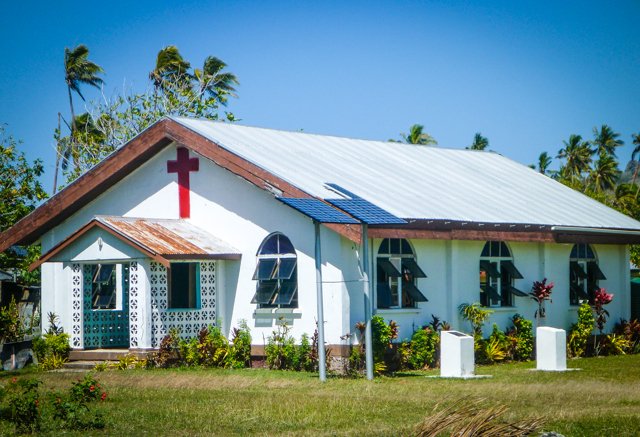
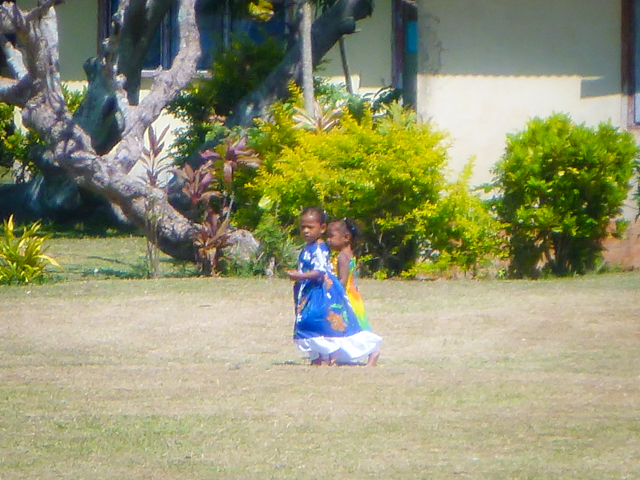
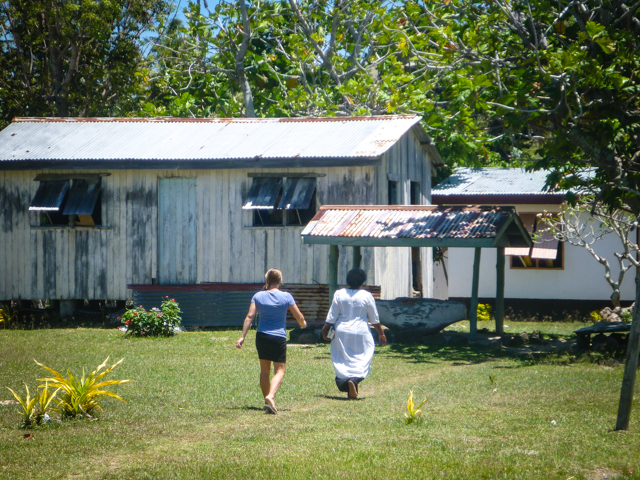
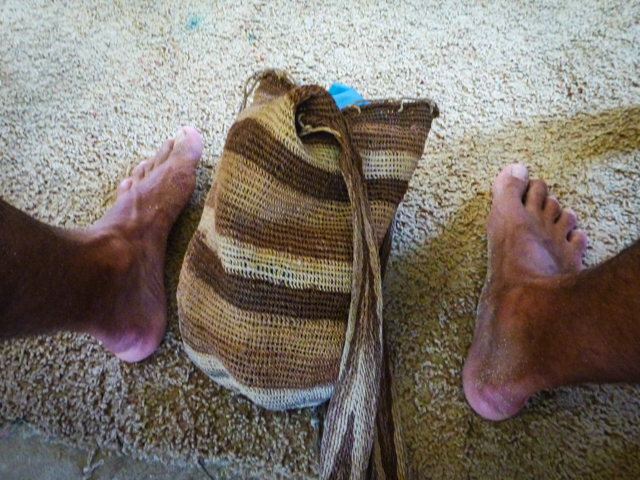
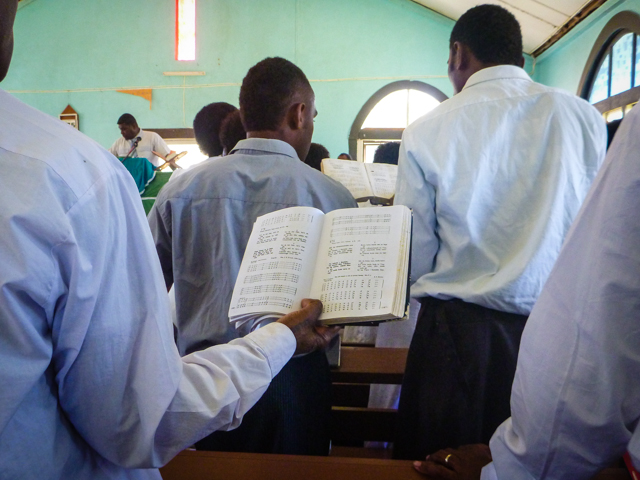
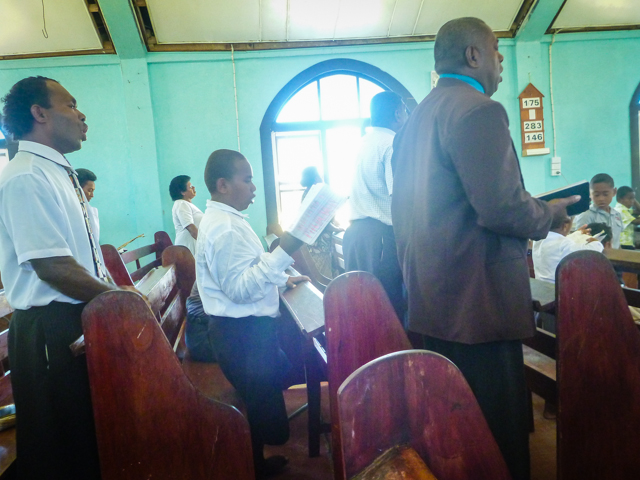
Their doctrine varies slightly from most versions of Christianity in that Jesus’ place on the cross is taken by a crucified lizard. I attributed this to the distortion of the message of God in the decades it would’ve taken missionaries to cross the Pacific, much like a theological game of telephone. I had to watch this guy for a while before he resumed catching bugs.
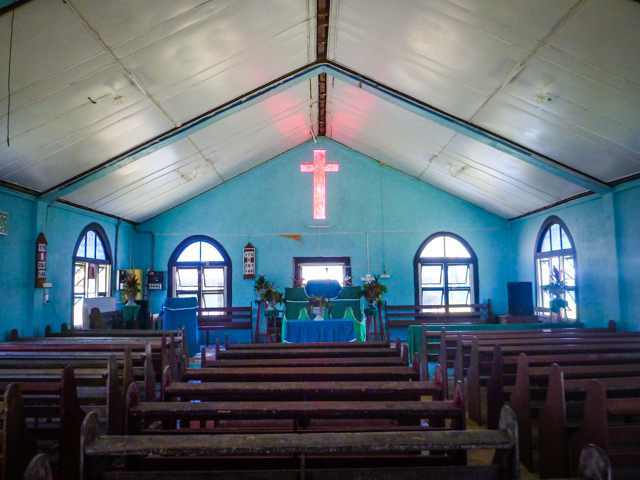

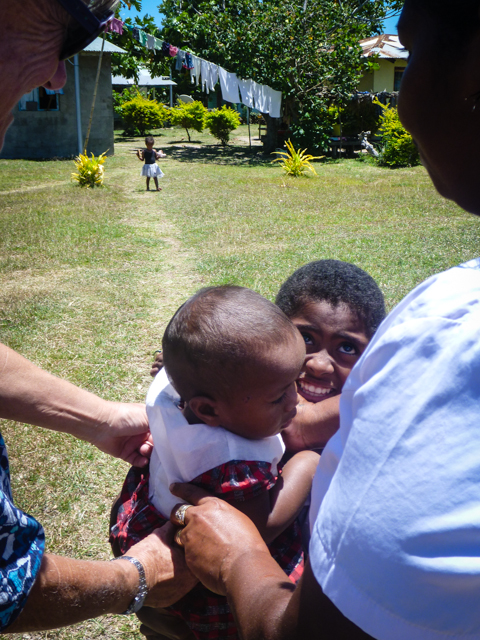
The next few days passed exploring the island’s coral reefs and mangrove swamps. In our wanderings we were invited to dinner with Sami and Lie who lived on Nanuya island in front of our anchorage. They made a traditional feast with cassava, fish, and chicken wrapped in palm-leaf bundles and baked on coals buried in the earth. The spread was ample and delicious, smoky from the coals. There was coconut sauce for the fish and papaya for dessert. We brought a couple bottles of wine to round out the meal. After dinner, Sami busted out the kava, chanted the traditional prayer and brewed the pulverized root in a sawed up fishing buoy. The cup, much like Patagonian mate, is passed to one person who drinks all of it and gives it back to the brewer. Upon accepting the cup of kava on is supposed to clap, say “Bula!” loudly, drink all the kava in one go, then clap three more times. Kava is a plant root which is ripped from the ground, questionably washed, pulverized with a big stick, then brewed in a cloth sack in tepid water. As you’d expect, it tasted like exactly like standing water from a hay field. A few bowlfuls does give one a placid, thoughtful demeanor. Maybe everyone is just thinking, “Hmmm… why am I drinking this again?”
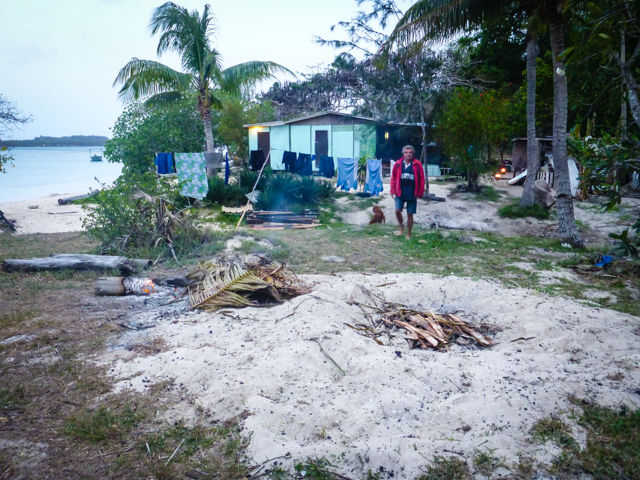
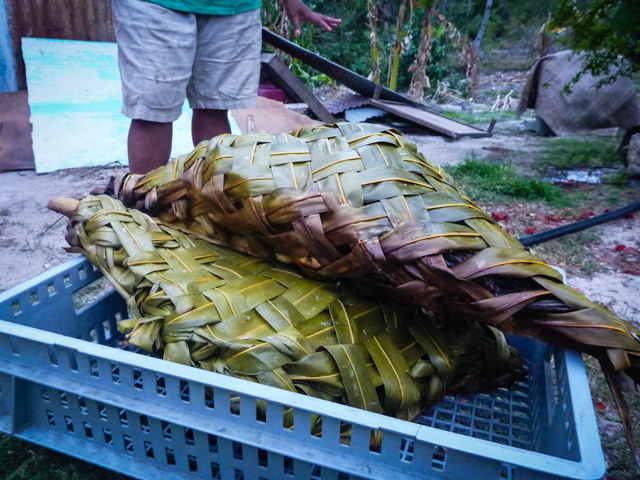
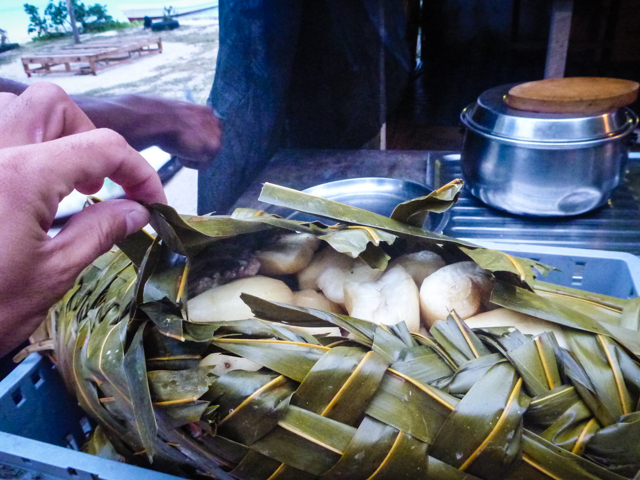
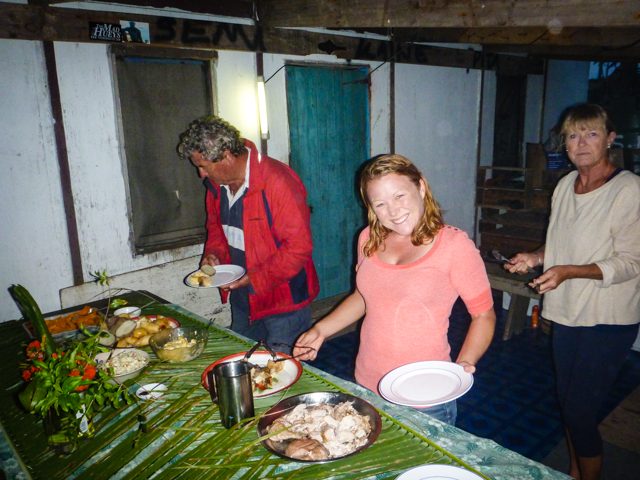

Sami and Lie asked us about life on the sea and in listing the boat systems that keep us safe and happy aboard, we revealed that we have a sewing machine and operate it with some dexterity. We ended up mending a kava pouch, a scarf, and a shredded pair of shorts for them and also gave them needles and thread for when my seams rip open in the near future. They gave us fruit and a gorgeous cowry shell for the help. Why can’t all transactions came down to fruit, shells, and practical goods?
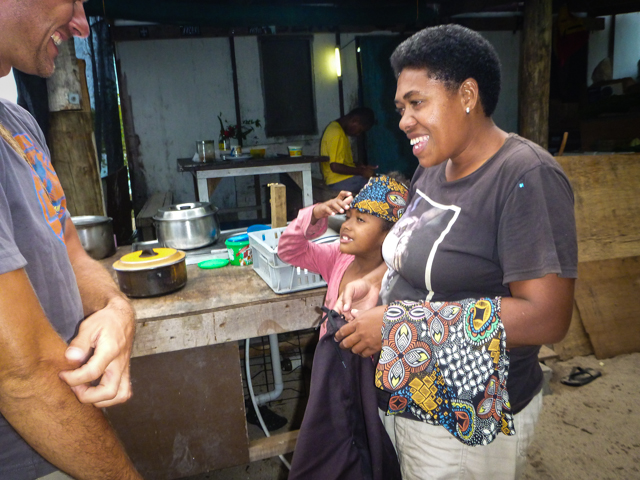
Poor dinghy had been prop-less for a week. Miranda and I eventually tracked down a chandlery in Nandi on the big island of Fiji. The new prop was shipped in from Melbourne then sent out to us on the Yellow Flier, which hauls passengers though the Yasawas to various little resorts out here. We had to tell them which bay we were anchored in and our friend Paul zoomed Miranda over to pick up the part. Despite the annoyance of the down time in ordering a part from Australia, I was impressed that the whole thing could be orchestrated from a cell phone in the middle of nowhere. I love technology.
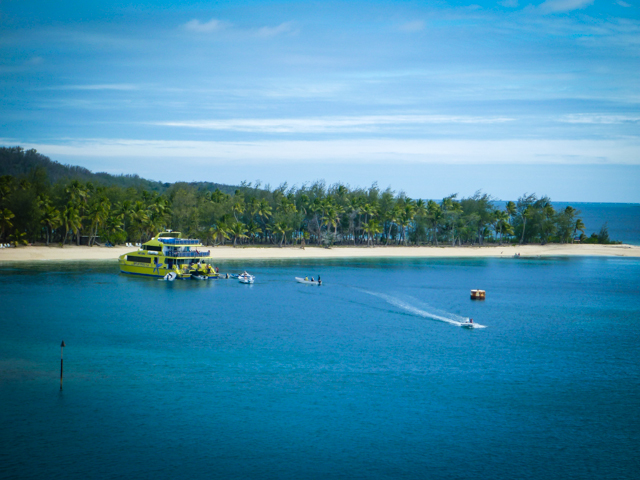
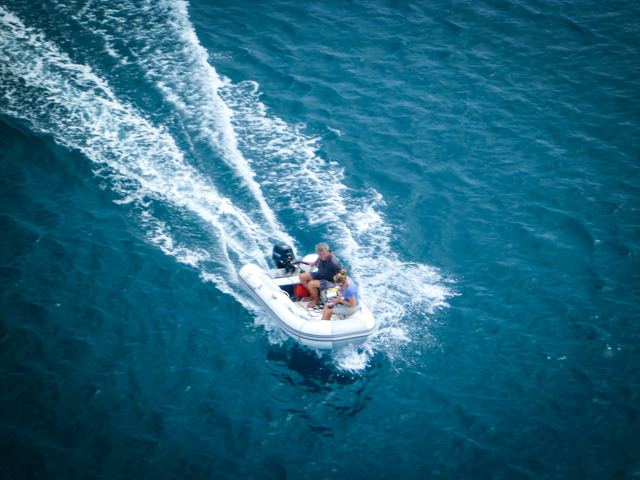
Miranda picked up the new prop because I was busy up the mast replacing our tricolor navigation light, which has been doubling as an anchor light, with a new stacked housing that has both tricolor and anchor lights built in. Many a salty sailor has given me a hard time about using a tricolor at night because it implies that you’re sailing along or a navigational buoy. Now with a real anchor light up there I can’t find the boat in the anchorage because it’s usually red or green! The first night driving back to the boat in the dinghy felt like trying to find a parked rental car. Now what color was that thing? I was pleasantly surprised to find that it wasn’t necessary to run new wire to install the light. Things are looking up. Miranda eventually let me down from the mast too, which is a plus.
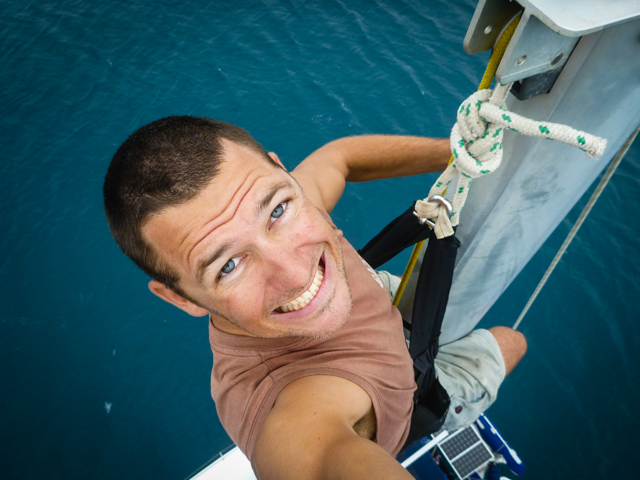

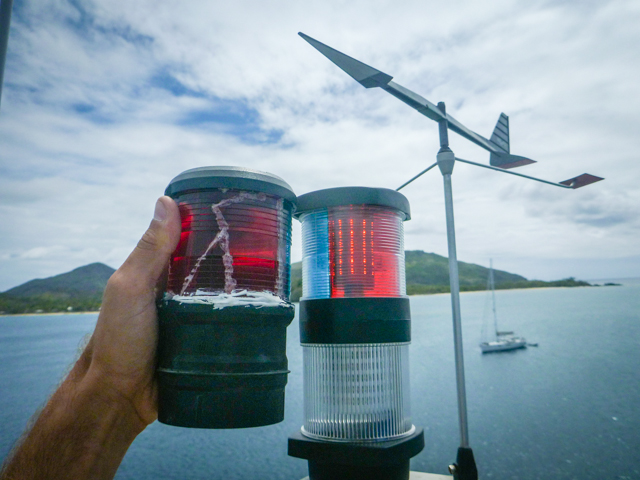
It had been almost a month since our last provisioning run to the Lautoka market. Half of a sad carrot and a couple soft potatoes haunted our pantry, but we had been running on cans for most of a week. We did ward off scurvy with fresh local fruit, but the situation turns dire when you’re hankering for the last of the cabbage. We heard rumors whispered on the airwaves about a local farm on a nearby island. The Yasawas aren’t often able to grow real crops because there are precious few springs on the rocky islands and there isn’t enough tanked rain water to use as irrigation. Miranda and I took off in the dinghy with instructions to find a certain bay only at high tide and follow a murky inlet through a mangrove maze to it’s termination. With bags on our backs and hope in our hearts, we set off to the supermarket.


We found the parking lot in a muddy pool and parallel parked next to a little boat. A dirt trail ended at a wooden house where we were greeted warmly by Toki and his wife Miri. As we walked down a trail to the clearing cut into the jungle, Toki explained that the farm had been in his family for generations. When we indicated that we’d buy anything and everything they had, Toki and Miri led us up and down the aisles picking veggies and dropping them into our bags. We were thrilled.
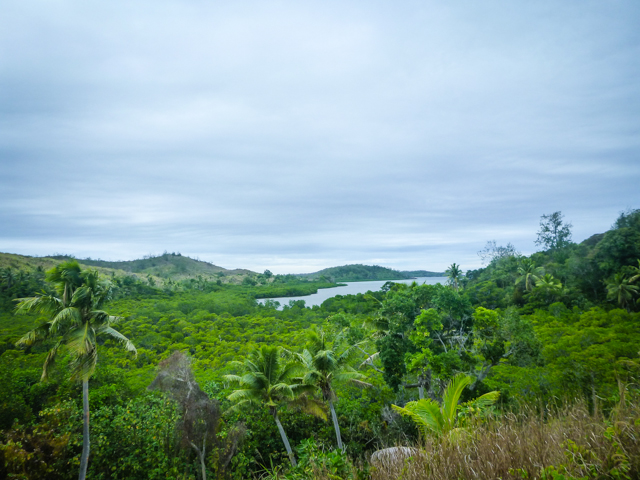
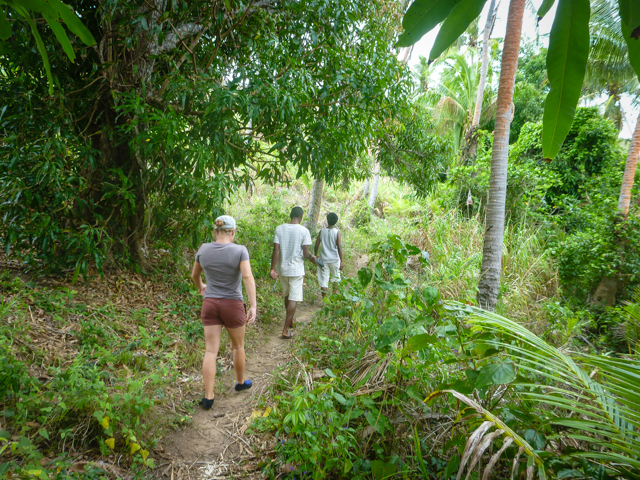


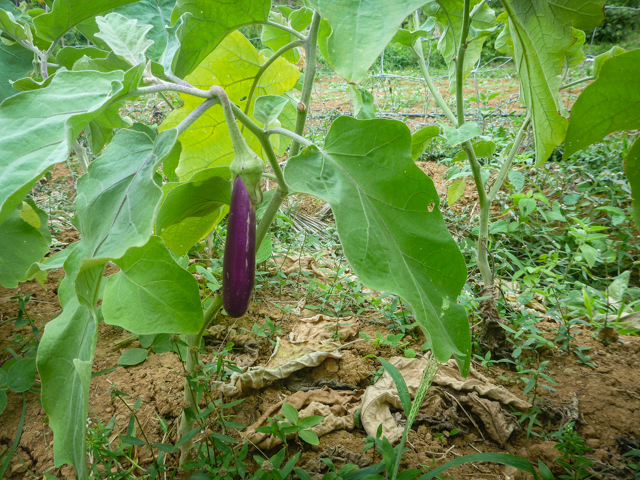

Toki also showed us the natural spring that made it possible to irrigate the land. When we could carry no more, we hiked back up the trail to their house and paid them for the produce. I brought an extra machete that I had aboard and gave it to them and they threw in a dozen eggs and a bunch of oranges. Back at the ranch, Miranda and I washed all our new goodies and made a salad that would make a vegan swoon. Not bad for twenty bucks.
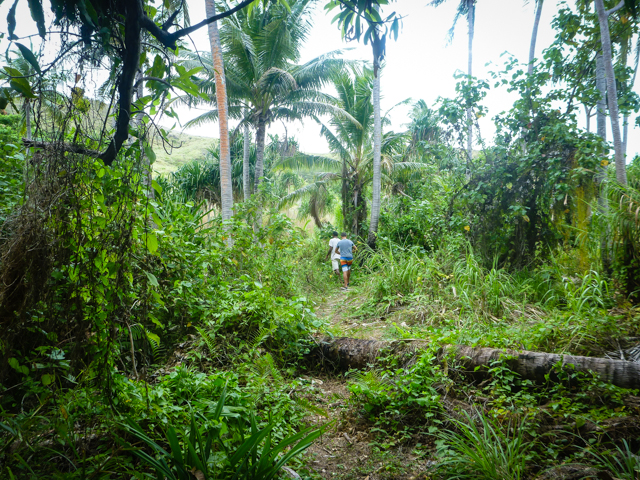
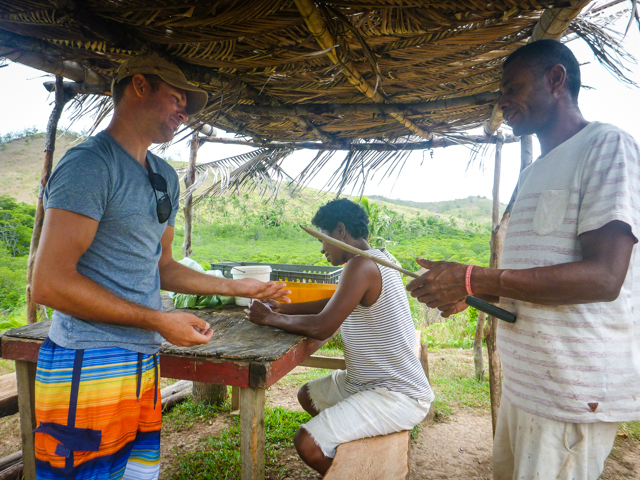
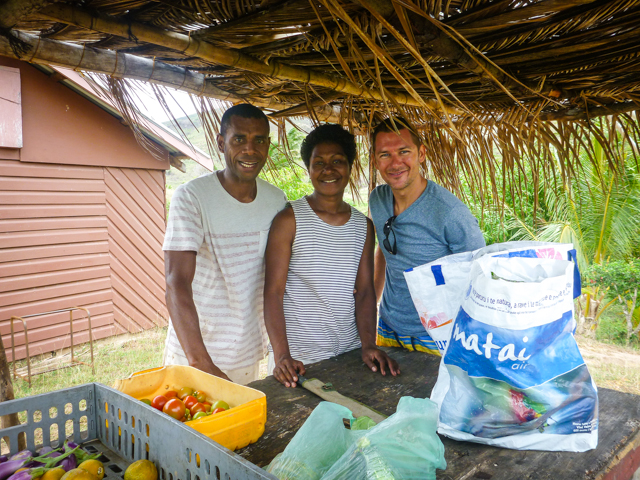
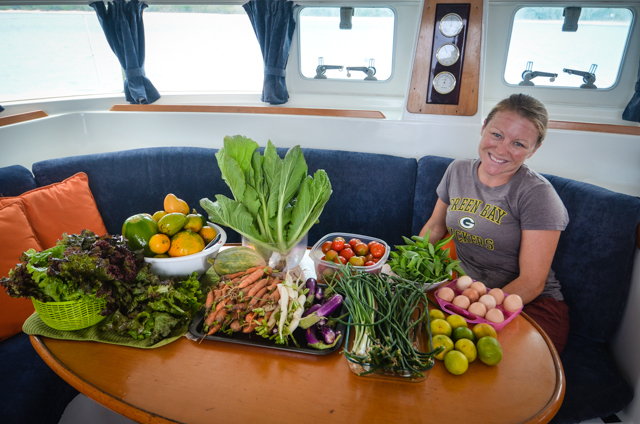
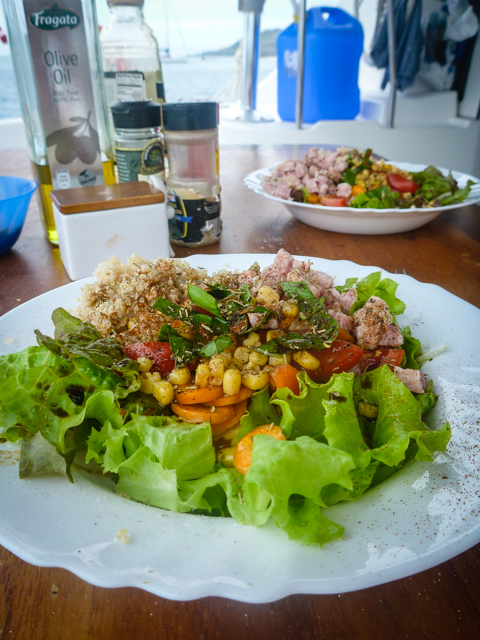
There’s a tropical low forming and the weather has been deteriorating for a few days. We’d really like to keep moving north but the wind was forecasted to kick up to thirty knots and rain. So for the last couple of days we’ve been aboard doing odd jobs, cooking, and reading, punctuated by blustery hikes around the island and kiteboarding sessions in horrid, squally conditions just for the hell of it. On the other side of Nanuya we found two standing shacks, one of which was a tea house. A lady came down from an even smaller shack on the hill to open it up and make us lemon leaf tea and cakes. Pretty darn cute.
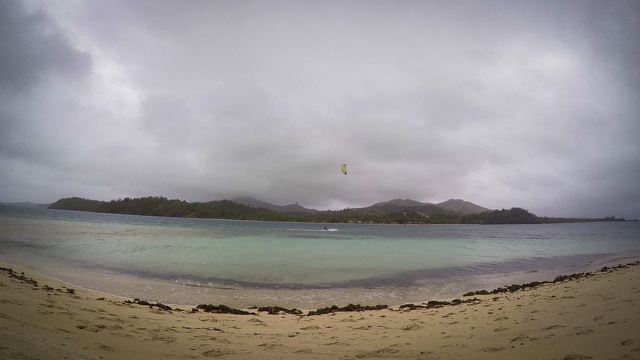

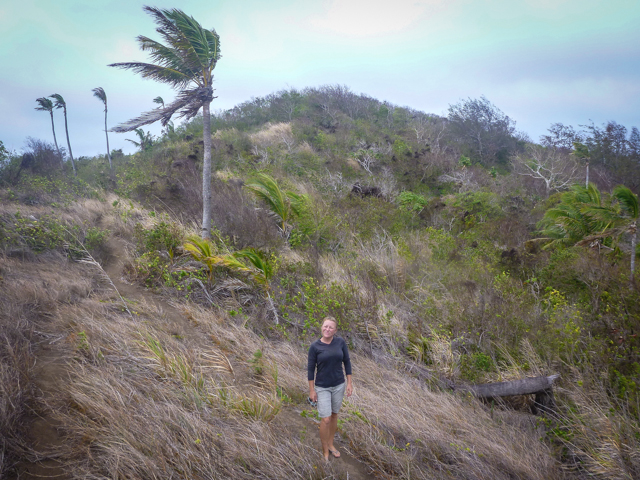

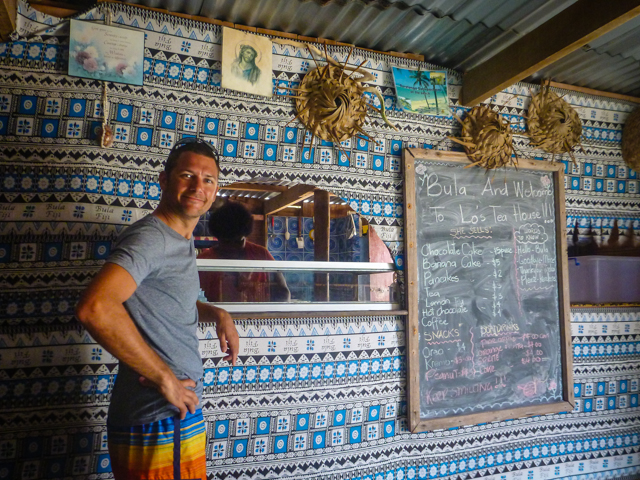
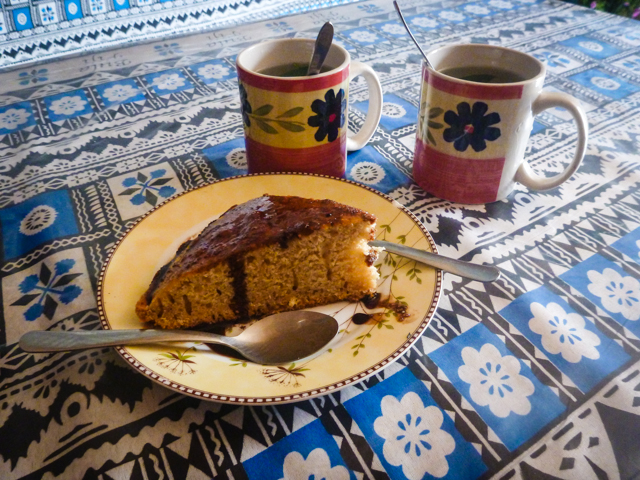
After a couple days of wind and rain we’re ready to move on from the protection of the Blue Lagoon and keep venturing north!


